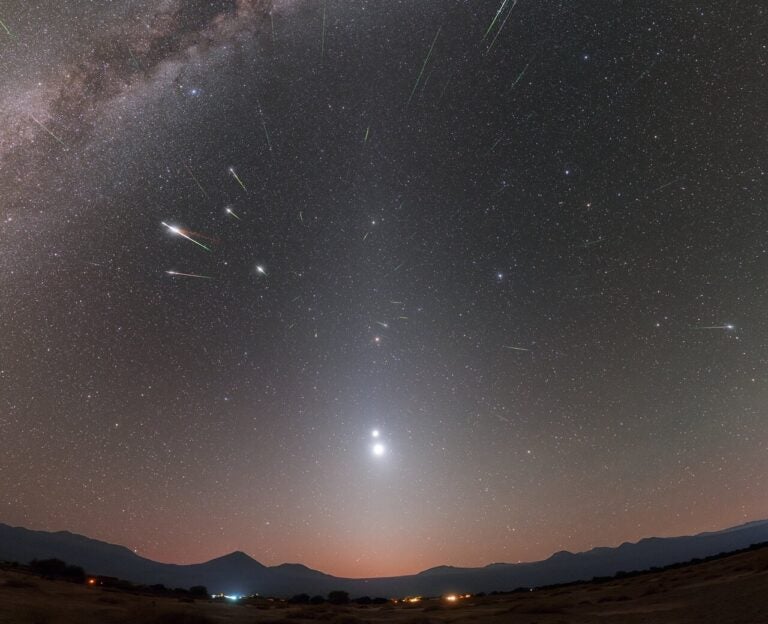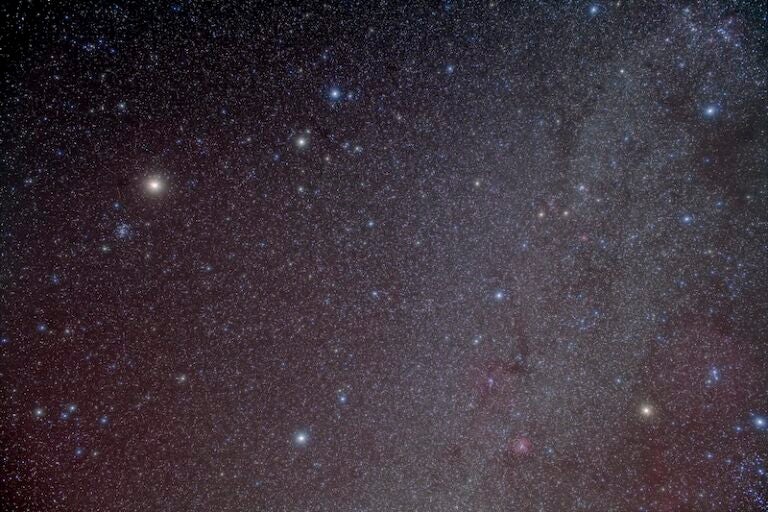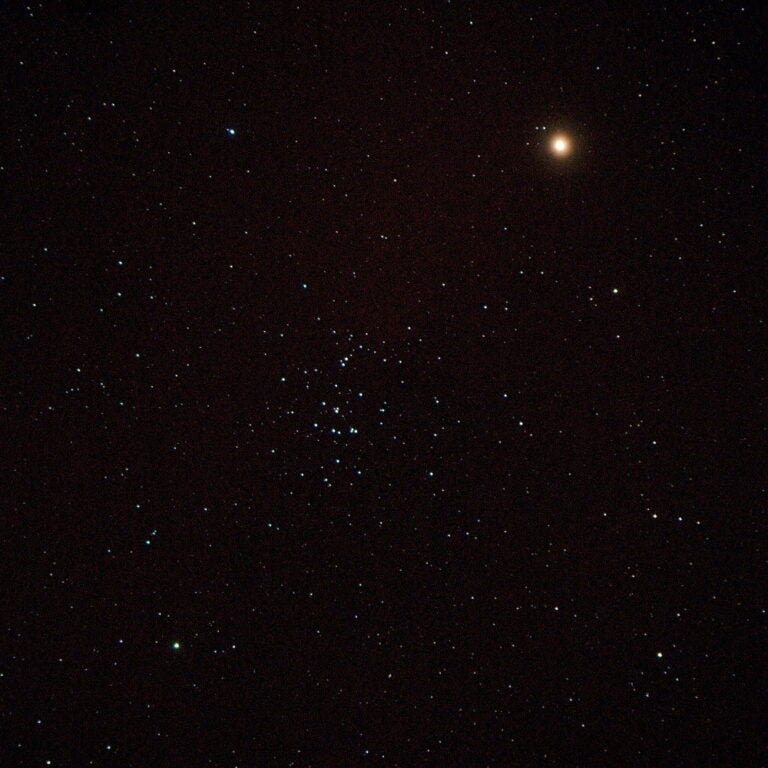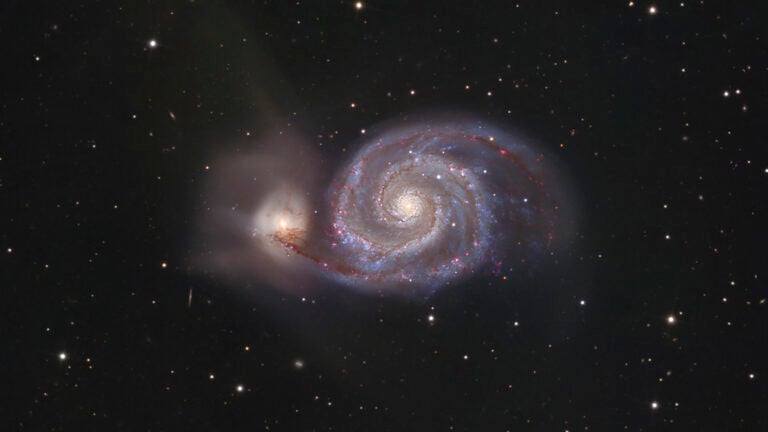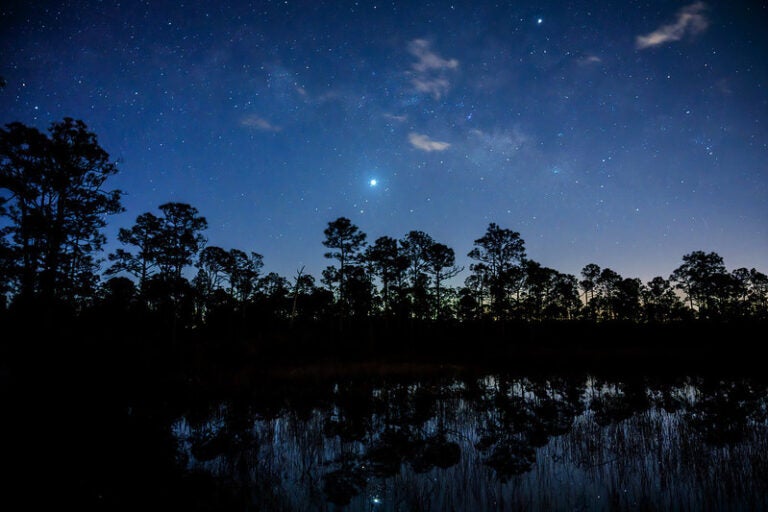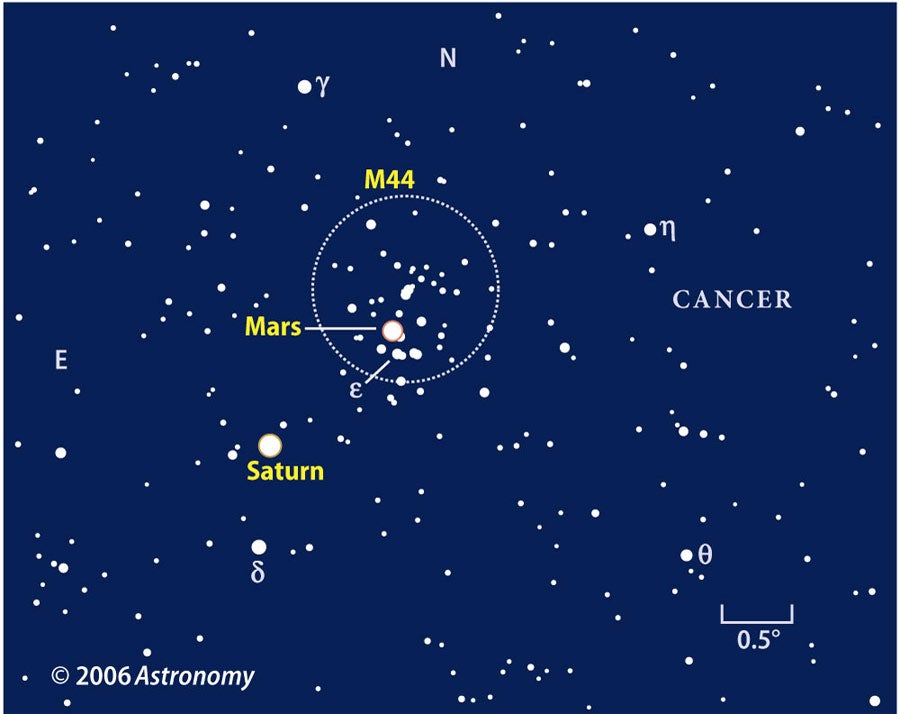
Mercury’s cameo
Mercury is the planet with the smallest orbit around the Sun, so it always hugs the twilight. We view Mercury’s orbit almost edge-on from Earth, so, from our perspective, Mercury seems to oscillate from one side of the Sun to the other as the planet orbits. Each time Mercury’s travels pull the planet away from the Sun’s glare, skygazers on Earth have a fleeting chance to view Mercury shortly after sunset or before sunrise.
Astronomers refer to Mercury’s greatest angle east (visible in the evening) or west (morning) of the Sun as an “elongation.” Some elongations are better than others because of Earth’s tilt and Mercury’s out-of-round orbit. This week and next, Mercury brightens and stands higher in the western sky as it approaches its greatest elongation June 20, when the planet lies 25° from the Sun. This is your best opportunity to see Mercury in the evening sky for the rest of the year.
Begin looking for a bright starlike point in the western twilight about 20 minutes after sundown. From middle northern latitudes, Mercury will be about 12° above the horizon (slightly higher than the width of a fist held at arm’s length) glowing at about magnitude 0.2. After June 20, the planet fades quickly, becoming harder to see in the twilight, and it begins a fast slide back toward the Sun.
Other sky events, June 13–22
Elongation is the apparent angular separation of an object from the Sun.
Click here for more sky events. Scope view
Through a telescope, observers will watch Mercury go through phases similar to the Moon’s. On June 14, the planet’s disk is more than 50-percent illuminated. At greatest elongation, Mercury’s disk will appear 38-percent lit. After this, it shrinks to a crescent and fades rapidly.
Most observers detect no surface markings on Mercury. It takes a seasoned observer and excellent atmospheric conditions to see anything at all on the planet, even through the largest amateur telescopes. Experienced amateurs, however, have recorded dusky markings and occasional bright areas on the planet. June 14, 2006
A trio of planets, each visible to the unaided eye, now graces evening twilight – Mars, Saturn, and elusive Mercury. The celestial show features a close pairing of Mars and Saturn as they two planets buzz the famous Beehive star cluster in Cancer, while Mercury makes its evening swan song for 2006. Mars and Saturn dance
As darkness falls and Mercury slips too low to see easily, look for a pair of bright stars above the planet. They are Pollux (left, magnitude 1.1) and Castor (right, magnitude 1.6), the brightest stars of Gemini the Twins.
Look above and to Gemini’s left for a “star” brighter than Castor and Pollux. This is Saturn, now gleaming at magnitude 0.4. Hovering nearby is a ruddy “star” a bit fainter than Castor: the Red Planet, Mars.
This week, Mars courses through the famous Beehive cluster (M44) in the constellation Cancer the Crab – a great treat for anyone who owns binoculars or telescopes. On June 15, as Saturn watches from the wings about 1.2° away, Mars gleams like an ochre jewel in the midst of the cluster’s smattering of stars.
Two nights later, on June 17, Mars passes 0.6° north of Saturn. Low-power, rich-field telescopes will show both planets in the same field of view. Mars lies in the foreground, 212 million miles (341 million kilometers) away. Saturn is 917 million miles (1.48 billion kilometers) away, while the Beehive cluster forms the backdrop 580 light-years away. The cluster itself is about 10 light-years across.

